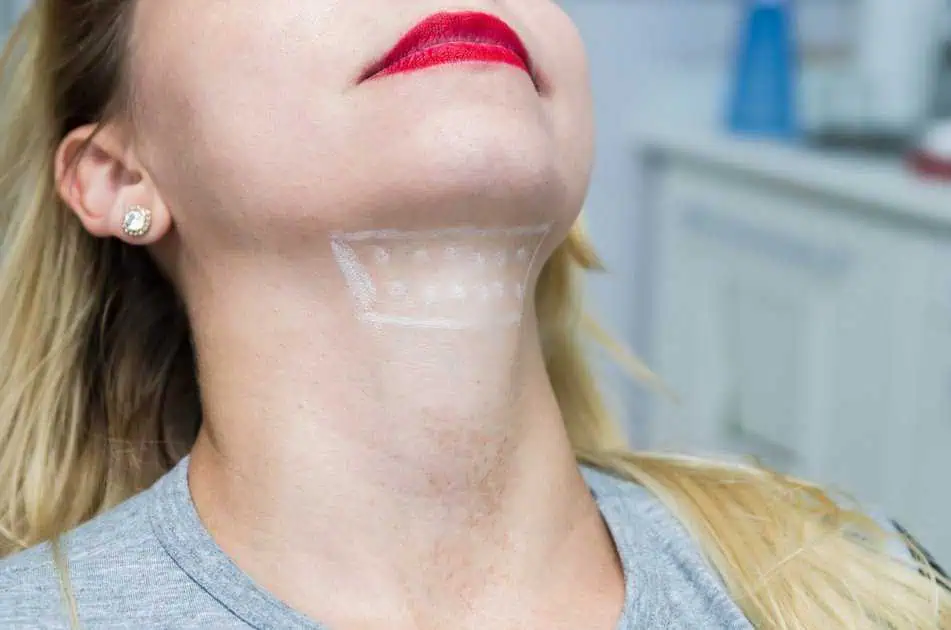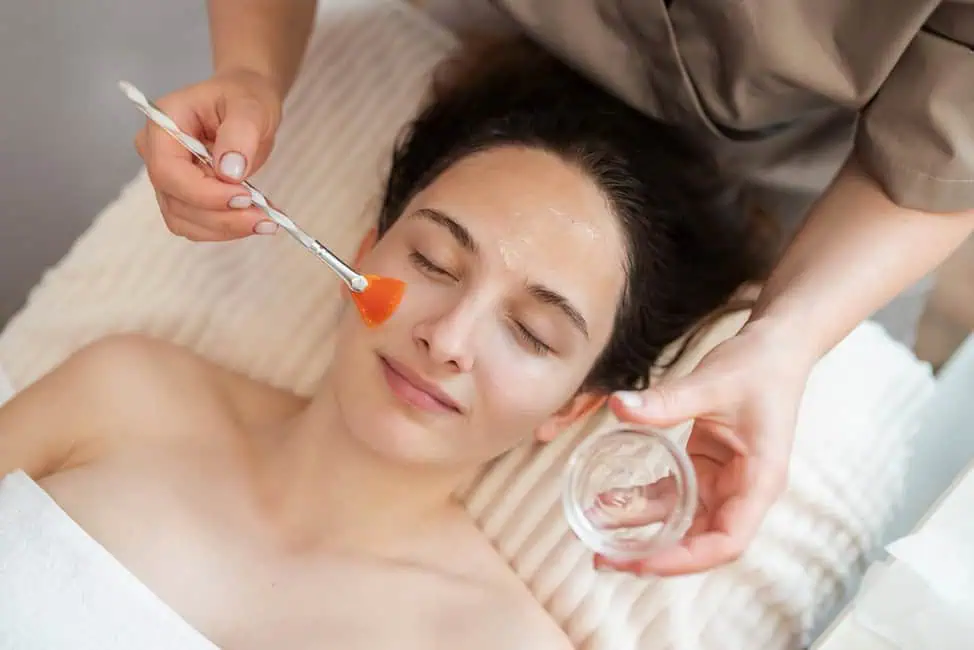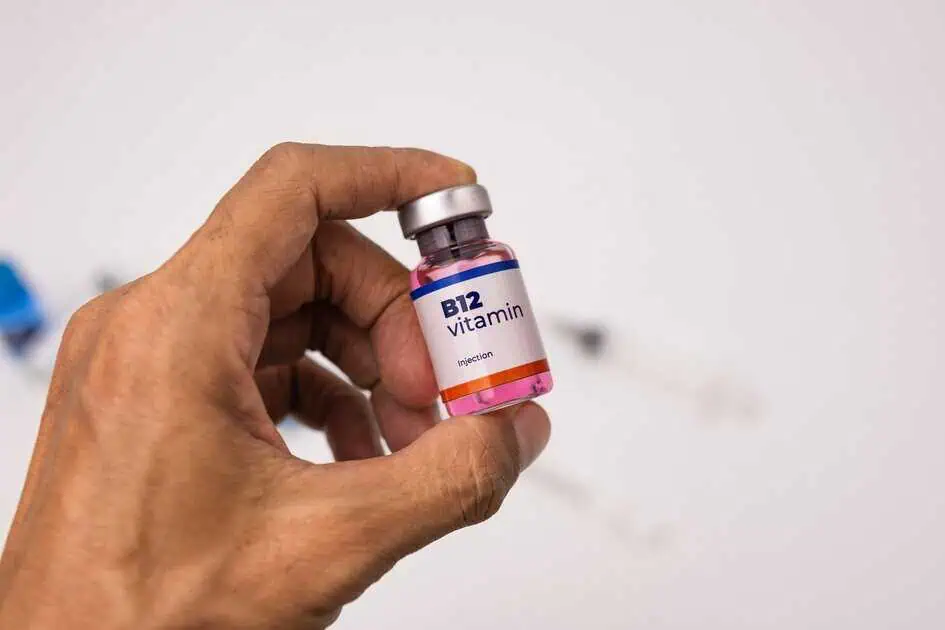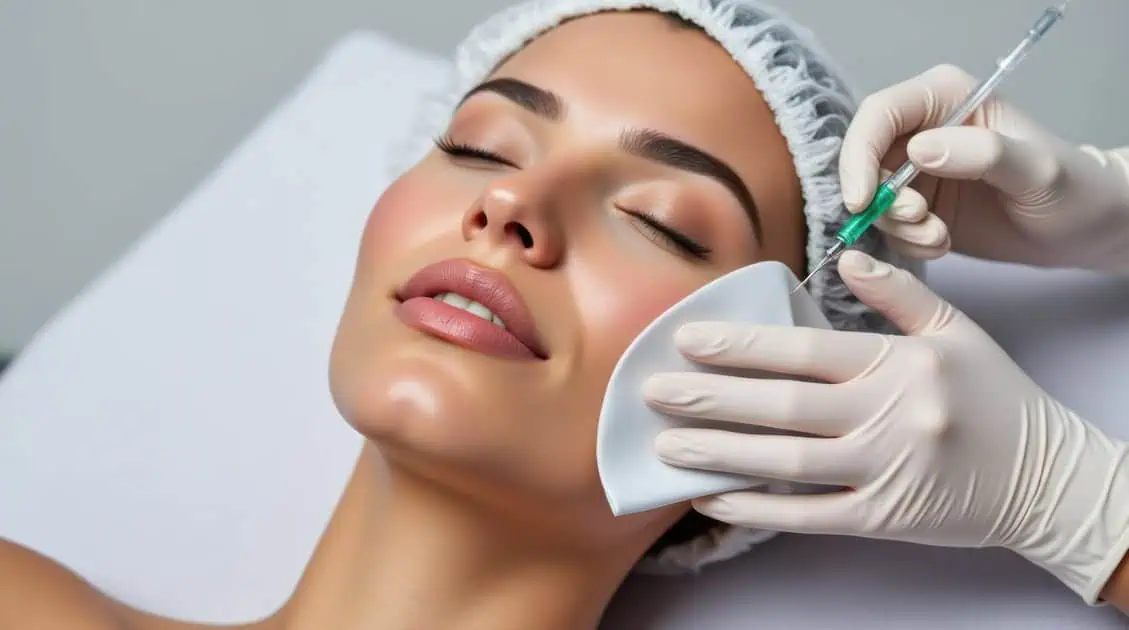Microneedling is a professional treatment for several skin concerns such as pigmentation, acne scars, skin rejuvenation, enlarged pores, and more signs of aging. This is a non-invasive procedure for collagen induction therapy where several sterile microneedles are pressed into the skin. Unlike other cosmetic procedures, Microneedling causes minimal damage to the skin, making it produce more collagen to repair the damage.
What Are The Benefits of Microneedling?
Here are some benefits of microneedling on the skin:
- Immediate skin-plumping effect seen
- Lasting results
- Almost no risk of skin trauma when done properly
- Little downtime
- Works most skin tones and types
How Does Microneedling Work For Pigmentation?
Hyperpigmentation is developed due to several factors, including inflammation, sun exposure, hormonal fluctuations, and age. It refers to patches of skin or spots that are darker than the surrounding area. The one is responsible for providing the skin its color is called melanin, which melanocytes within skin cells produce.
The excess melanin accumulates and forms hyperpigmented patches when overproduction occurs. Microneedling helps when it pierces the skin with small sterile needles to produce a controlled skin injury. This triggers the skin’s wound-healing process, which prompts skin cell turnover and allows fresh, new cells to replace damaged ones.
How Does Microneedling Work for Acne Scars?
Acne scars can also result from too much or too little collagen. When the skin gets hurt, the body responds by producing new collagen to repair the damaged tissue, but often, things can go wrong.
If the skin pumps out more collagen than the wound needs to heal, it will leave a raised scar. If, instead, the inflammatory acne destroys too much collagen, it causes indented scars.
The whole point of microneedling is to create a controlled situation that stimulates the collagen production enough for healing, resulting in smooth and healthy skin tissue.
How Does Microneedling Work to Boost Collagen?
Microneedling creates micro-injuries to the skin. As a natural healing response, the body produces collagen and elastin. That said, this is called neocollagenesis, which literally means “making new collagen.”
In addition, neocollagensis is caused by needles piercing the stratum corneum, which is the outermost layer of the epidermis. Usually, needles from 1 mm to 3 mm are used to achieve desired results and stimulate collagen production.
In fact, there are 16 different types of collagen in the body, and the help of microneedling stimulates the collagen type needed for the area being treated. Those taking collagen supplements or injecting collagen may experience limited results, don’t work, or don’t last long. When the body makes its own collagen because of micro-injuries, the results tend to last longer than any other treatment.
When Will I See The Results And Its Downtime?
Microneedling results may vary from person to person. In general, results can take between 6- 8 weeks before visible signs of skin regeneration are visible. The gradual improvement will continue to evolve over the ensuing months as collagen production continues.
Usually, the recovery after the treatment depends on the length and density of the needles used. Subsequently, the skin’s pink or red appearance after the treatment occurs 24-48 hours in most cases, and mild bruising is possible on rare occasions. Additionally, the skin can also feel tight and warmer, which are normal and will usually fade after a relatively short period.
Who Are Good Candidates For Microneedling?
Through consultation, the dermatologist will determine if the person is ideal to receive this treatment to advise the treatment plan that suits the patient best. Microneedling is best for all skin types, but it is not suitable for patients who:
- Are you pregnant or breastfeeding?
- I have used Roaccutane for the last six months.
- Have a current outbreak of cold sores, active acne, acne cysts, or any infection or chronic skin conditions.
- With a history of keloid or hypertrophic scars or poor wound healing.
- Have abrasions, cuts, and open wounds to the skin.
Does Microneedling Have Any Side Effects?
Microneedling is relatively safe. It can be done in around 15 minutes with little or no downtime and has to be done with a trained professional. However, this procedure doesn’t come without its side effects, such as:
- Redness
- Bleeding
- Bruising
- Hyperpigmentation
- Infection
- Irritation
- Swelling
- Scarring (when done too often or on active acne lesions)
In this case, Microneedling has to be done by a trained professional. So it’s best only to pick the best, not the cheapest, a practitioner for this.
How Many Sessions Of Microneedling Are Needed?
One single treatment can potentially provide a noticeable result, but it is recommended to have a series of 3-4 treatments that are spaced about 6-8 weeks apart to achieve maximum results. For patients with deep wrinkles, advanced photo-aging, stretch marks, or acne scarring, it is usually recommended to receive 6-8 sessions at 6-week intervals. Overall, it depends on the patient’s skin conditions and desired outcome.
What Are The Aftercare Tips To Follow?
The medical provider usually provides detailed instructions on what to do after microneedling. The instructions may be based on the medical history or skin type, so it is crucial to follow them carefully.
- Apply sunscreen constantly for the first 2 weeks after microneedling. When going outside, make sure to apply sunscreen following the treatment.
- Avoid spending too long in the sun for the first week following the microneedling treatment as this skin will be prone to damage as usual.
- Use any topical antibiotic cream that the doctor prescribes to avoid infection.
- Wash the hands before touching the face.
- Avoid applying makeup, especially those used makeup brushes, within 24 hours after Microneeding.
- Avoid saunas, swimming pools, and situations that might sweat heavily, including intense workouts at the gym to protect the skin within 72 hours after Microneedling.
- Ensure to consult the dermatologist about any scrubs, toners, or cleansers that are about to be used 2 to 3 days after microneedling so the ingredients won’t worsen side effects.
Final Thoughts
Taking care of the skin after microneedling can greatly affect the treatment outcome. My Face Lady offers Microneedling, also known as collagen induction therapy, a treatment that pricks the skin to induce tiny wounds in the body, which produces more collagen and elastin. These two proteins assist in healing skin and give it a smoother, more youthful appearance.








